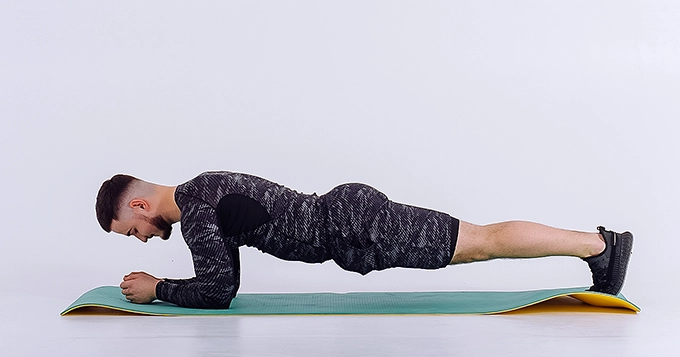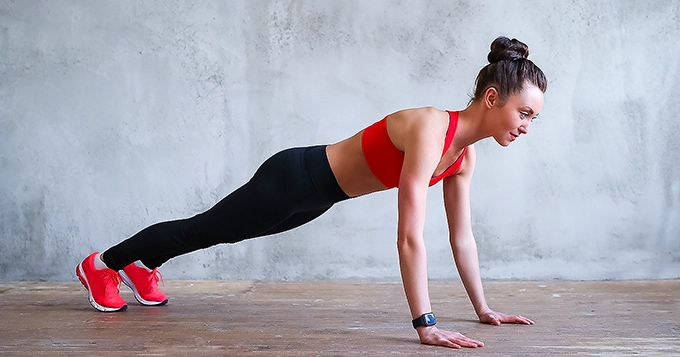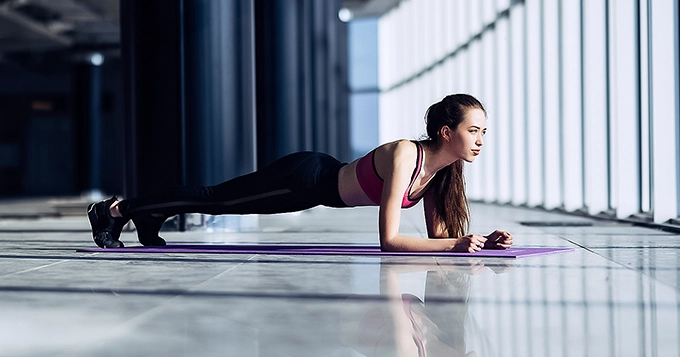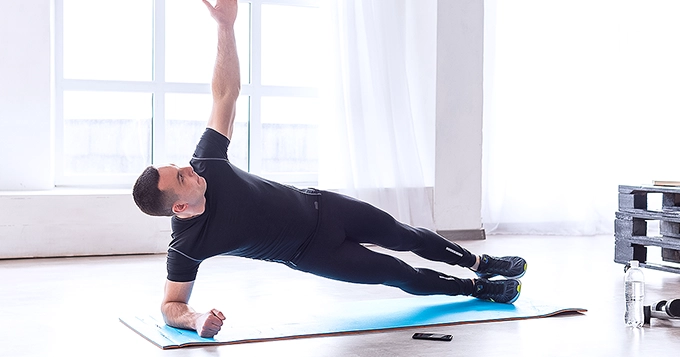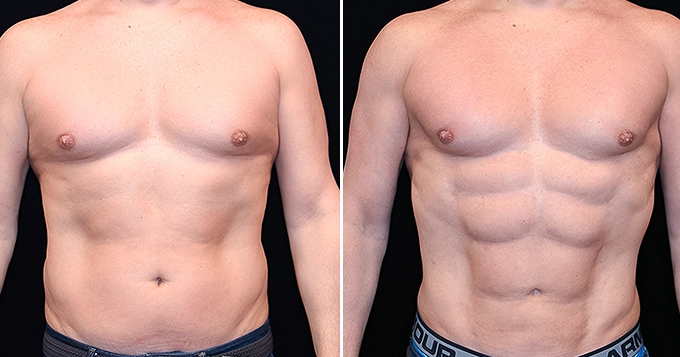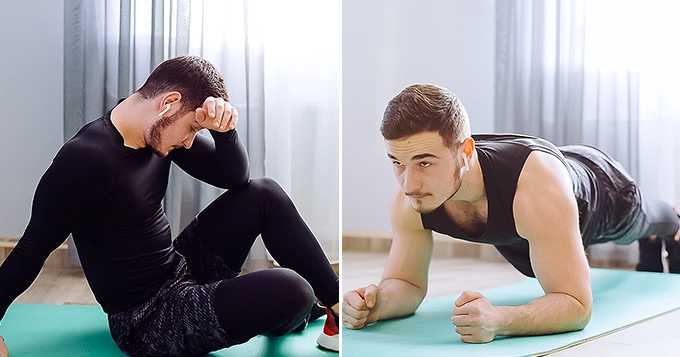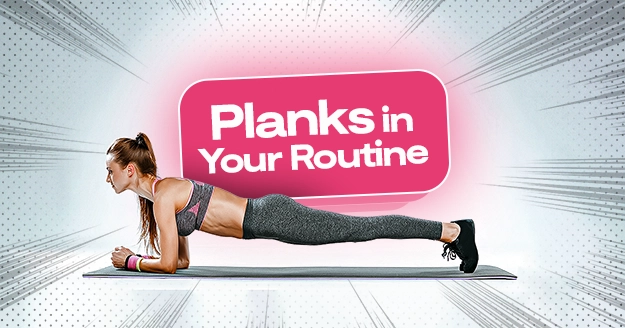Planks are a versatile and effective exercise that can revolutionize your daily workout routine. By incorporating planks into your regimen, you can expect many benefits that will enhance your overall fitness and well-being. Let’s explore what you can anticipate when you start integrating planks into your daily routine.
What Muscles Do Plank Work?
A plank workout benefits your core muscles, situated between your pelvic floor and diaphragm, commonly referred to as your trunk. These muscles are vital in supporting your movements and stabilizing your spine, ensuring proper posture and overall stability.
Core muscles include:
- Rectus abdominis (referred to as “abs”).
- Obliques
- Transversus abdominis
Plank also activates the other related muscles:
- Glutes
- Hamstrings
- Lower back
How to Do a High Plank?
Set-Up:
Look for a leveled ground and get on all fours with your hands shoulder-width apart, arms fully extended. Make sure your palms and toes are firmly planted on the floor.
Execution:
- Keep a straight line from your head to your ankles. Engage your core and glutes as you brace your arms.
- Hold this position based on your preferred duration.
How to do a Low Plank?
Set-Up:
On a flat area, get on all fours and bend your arms until your elbows and forearms rest on the floor.
Execution:
- Brace your arm and ensure that your body forms a straight line from head to ankles as you contract your glutes and abs.
- Hold this position based on your preferred duration.
How to do a Side Plank?
Set-Up:
On a flat area, lie on your side and position your forearm on the floor beneath your shoulder. Place your opposite hand on your hip. Extend your legs and stack them on top of one another.
Execution:
- Lift your hip off the floor. Ensure your heel, hip, and shoulder are in a straight line as you brace your core and glutes. Keep your neck neutral.
- Hold this position based on your preferred duration.
- Repeat the process for the opposite side.
How long should you hold a plank?
Hold a one minute plank before you start advancing.
Once you achieve the ability to complete three sets of one minute in a modified plank exercise, advance to the low plank variation. If you initially begin with three sets of 30 seconds in a low plank, aim to gradually increase the duration of each hold over the following weeks. Similarly, apply this progression approach to the high plank exercise.
To reap the maximum benefits of this exercise, you can:
- Incorporate one minute plank into your routine two to four times per week.
- Gradually extend the duration of each plank session by five to 10 seconds.
- Once you can sustain the plank position for over a minute, consider advancing to a new variation, such as incorporating overhead reaches while planking.
What are the Benefits of Doing Planks?
Convenient
Cost-free and time-efficient are a few benefits of planks, requiring only a few minutes, without the need for a gym membership or specialized equipment. It can be performed anywhere, making it highly accessible.
Core Strength Development
Before and After Plank Exercise Benefits (Core Muscles Improvement)
Planks are renowned for strengthening the core muscles, including the abdominals, obliques, and lower back. Holding a plank position engages these muscles isometrically, improving core stability and balance over time.
Planks can improve your posture
If you find yourself dealing with back discomfort due to prolonged periods of sitting at a desk, here’s a positive outlook: Plank exercise offers a solution to enhance your posture!
By targeting and strengthening key muscle groups including the back, chest, shoulders, neck, and abs, planks facilitate maintaining a proper posture. This exercise aids in keeping your shoulders aligned and your lower back in a neutral position whether you’re seated or standing — essential elements for good posture.
Additionally, planks contribute to developing isometric strength in your core muscles. This strength enables you to resist slouching while enduring extended periods of standing or sitting, promoting better posture overall.
Increased Endurance
Incorporating planks into your daily fitness routine can boost your muscular endurance. As you progress and hold plank positions for longer durations, your muscles adapt to the sustained effort, leading to greater endurance and stamina during other activities.
Planks can increase your flexibility
Although it might not seem apparent, the benefits of planks offer an effective means to stretch the lower body.
Assuming the plank position helps elongate the hamstrings and the arches of your feet, transforming the plank into a combination of strength and stretching exercise.
For those aiming to target their sides, incorporating side planks with extended arms can effectively stretch that specific area of the body.
Prevents exercise-related injuries
Performing squats, deadlifts, and overhead presses without sustaining injuries can be challenging without a sturdy core. Maintaining a straight spine is crucial for executing these exercises. A plank workout benefits your core muscles, enabling better bracing during these movements.
Boost Mental Health
Before and After Plank Exercise Benefits (Mental Health)
Plank exercises not only strengthen the body but also positively impact mental health. The physical challenge and focus required during planking can serve as a form of mindfulness, allowing people of all fitness levels to clear their minds of stressors and distractions.
Additionally, regular engagement in plank exercises releases endorphins, which are natural mood enhancers that promote happiness and well-being. Furthermore, the sense of empowerment and accomplishment that comes from progressing in plank performance can reduce anxiety and boost self-confidence, contributing to overall improved mental health.
Planks are easy to modify
Although the classic plank is an excellent foundational exercise, it can be customized and expanded to meet individual needs.
One modification involves transitioning to a forearm plank position. Another way to enhance the exercise is by gradually extending the duration of the hold. Begin with a 15- to 30-second hold and progressively increase the duration over time.
It’s advisable to set a maximum time limit of two minutes for plank sessions. For those aiming to enhance athletic performance, studies suggest that repeated 10-second holds may yield optimal workout benefits.
